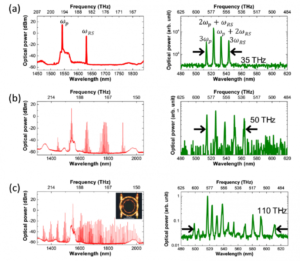Development of Glass Photonic Crystal Resonators that Maintain Two Orthogonal Polarization Modes
Research
Development of Glass Photonic Crystal Resonators that Maintain Two Orthogonal Polarization Modes
Long confinement times achieved for both horizontal and vertical polarization
Photonic crystal resonators are expected to be used for light-based classical and quantum signal processing because they can strongly confine light in a small space and efficiently increase the interaction between light and matter. However, since the resonators are mainly formed by two-dimensional and one-dimensional periodic structures on a horizontal plane, one of the challenges is to realize polarization independence, which confines polarization in both horizontal and vertical directions in the same way due to the symmetry breakdown of the structure. In this study, we have achieved highly efficient light confinement for both horizontal and vertical polarization in a nanobeam photonic crystal resonator made of silica, and have provided a guideline for the realization of polarization-independent photonic crystal resonators.
The nanobeam resonator fabricated in this study has a one-dimensional rectangular waveguide with periodically arranged vacancies. The use of silica, which has a low refractive index, reduces the effect of the periodic structure on the dispersion of horizontally polarized waves, enabling the observation of horizontally and vertically polarized resonant modes in the same band. The performance index qThe performance of both polarization modes was over 10,000, which is the highest performance value for a photonic crystal resonator made of silica. This is the highest performance value for a photonic crystal resonator made of silica, and is comparable to the performance of resonators made of silicon with a high refractive index that confines horizontal and vertical polarization in previous research.
In this study, we further show analytically that it is possible to match the resonance wavelengths of horizontal and vertical modes by enhancing the symmetry of the resonator structure. This technique provides a new design guideline for polarization-independent photonic crystal resonators.

Figure: Schematic of the structure with SEM images and transmission spectra of two orthogonal polarizations obtained.
- Categories
- 研究トピックス



